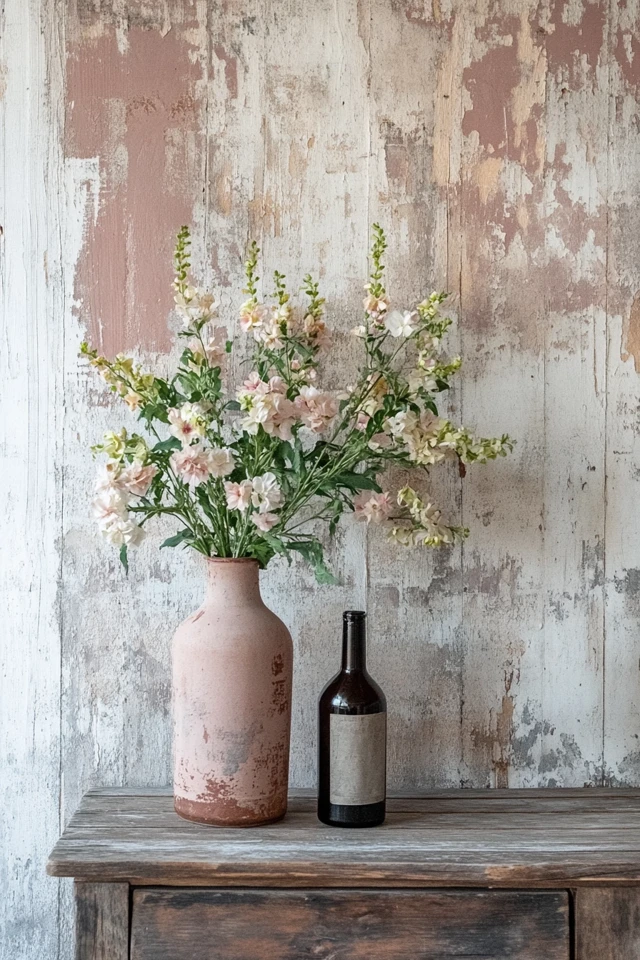Introduction
There’s something magical about distressed finishes—they tell a story, evoke nostalgia, and bring a sense of authenticity to any space. When I first discovered farmhouse décor, it was the distressed finishes that captivated me most. I remember visiting a vintage shop and falling in love with an old wooden dining table that had a perfectly weathered patina. It wasn’t just a piece of furniture—it felt like it carried the history of generations. That table ended up becoming the focal point of a farmhouse-style dining room I designed for a client, and it taught me an important lesson: distressed finishes are more than an aesthetic choice—they’re what make a space feel warm, lived-in, and inviting.
If you’ve been dreaming of adding rustic charm to your home, distressed finishes are the key to achieving that quintessential farmhouse look. From weathered wood to chipped paint, these techniques add character to your furniture and décor. Let’s explore how to use distressed finishes to transform your space into a farmhouse haven.
Why Distressed Finishes Work in Farmhouse Décor
Distressed finishes are a hallmark of farmhouse design because they evoke a sense of history and craftsmanship. Here’s why they work so well:
- Timeless Appeal: Distressed finishes have a vintage quality that feels timeless and authentic.
- Adds Texture: The imperfections, like chipped paint or worn edges, add depth and visual interest to a space.
- Relaxed Atmosphere: Farmhouse décor is all about creating a cozy, lived-in vibe, and distressed finishes help achieve that effortlessly.
Key Elements of Distressed Finishes
1. Weathered Wood
Weathered wood is a farmhouse staple. Its worn, textured appearance adds warmth and character to furniture and accents.
- Where to Use It:
- Dining tables
- Coffee tables
- Open shelving
- Beams and flooring
- Styling Tip: Pair weathered wood with soft, neutral tones and metal accents to create balance.
2. Chipped Paint
Chipped or peeling paint gives furniture a charming, aged look.
- Where to Use It:
- Cabinets
- Picture frames
- Accent chairs
- Styling Tip: Use this technique sparingly to avoid an overly worn appearance. A single distressed piece can act as a focal point.
3. Whitewashing
Whitewashing is a technique that softens wood surfaces with a light, milky finish.
- Where to Use It:
- Shiplap walls
- Coffee tables
- Wooden trays
- Styling Tip: Use whitewashing in spaces where you want to brighten the room while retaining a rustic touch.
4. Rusted Metal
Rusty, aged metal adds an industrial edge to farmhouse décor.
- Where to Use It:
- Light fixtures
- Cabinet hardware
- Wall art
- Styling Tip: Combine rusted metal with natural wood for a perfect blend of rustic and industrial farmhouse style.
5. Sanded Edges
Lightly sanded edges give furniture a worn, antique look without going overboard.
- Where to Use It:
- End tables
- Mirrors
- Bed frames
- Styling Tip: Focus on corners and edges to mimic natural wear and tear.
How to Create Distressed Finishes Yourself
Distressed finishes aren’t just for pre-made furniture—you can easily create the look yourself. Here’s how:
1. Sanding Technique
Sanding is the simplest way to achieve a distressed look.
- Steps:
- Paint the piece of furniture in your chosen color.
- Once the paint is dry, use sandpaper to lightly sand edges, corners, and areas where natural wear would occur.
- Finish with a clear wax or matte sealant to protect the surface.
2. Chipped Paint Technique
Give your furniture a peeling, layered look.
- Steps:
- Apply a base coat of paint and let it dry.
- Brush a layer of petroleum jelly over areas where you want the paint to chip.
- Apply a second coat of paint in a contrasting color.
- Once dry, gently wipe the jelly-coated areas with a cloth to reveal the base coat underneath.
3. Whitewashing Technique
Achieve a soft, aged look with a whitewash finish.
- Steps:
- Mix white paint with water (1:1 ratio).
- Apply the mixture with a brush, then wipe away excess with a cloth.
- Let the wood’s natural texture show through for an authentic effect.
4. Staining and Layering
Layering stain and paint creates depth and an aged appearance.
- Steps:
- Apply a wood stain as the base layer.
- Once dry, paint over the stain in a lighter color.
- Sand areas of the paint to reveal the stain underneath.
Picture Gallery
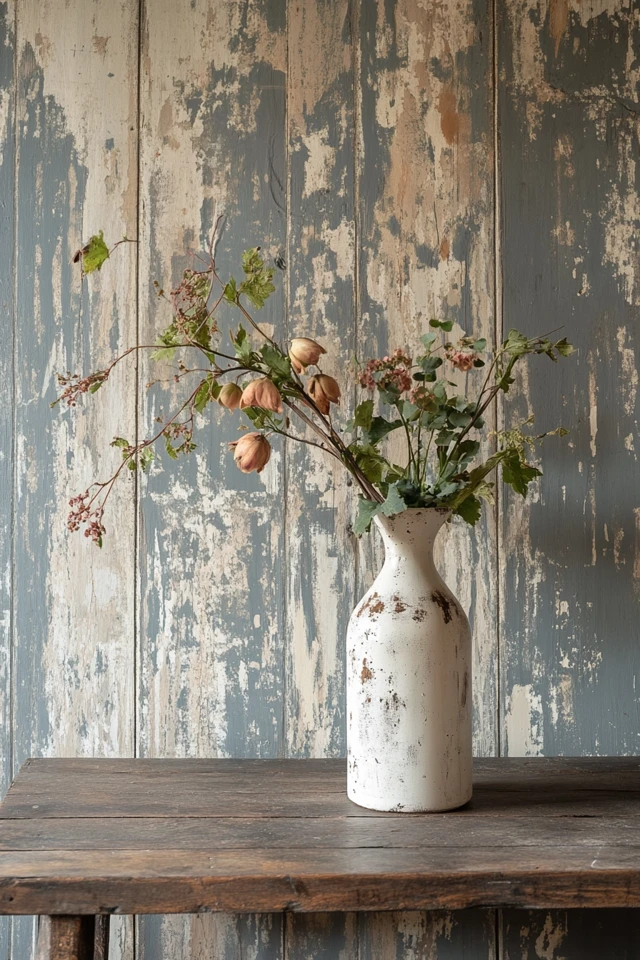
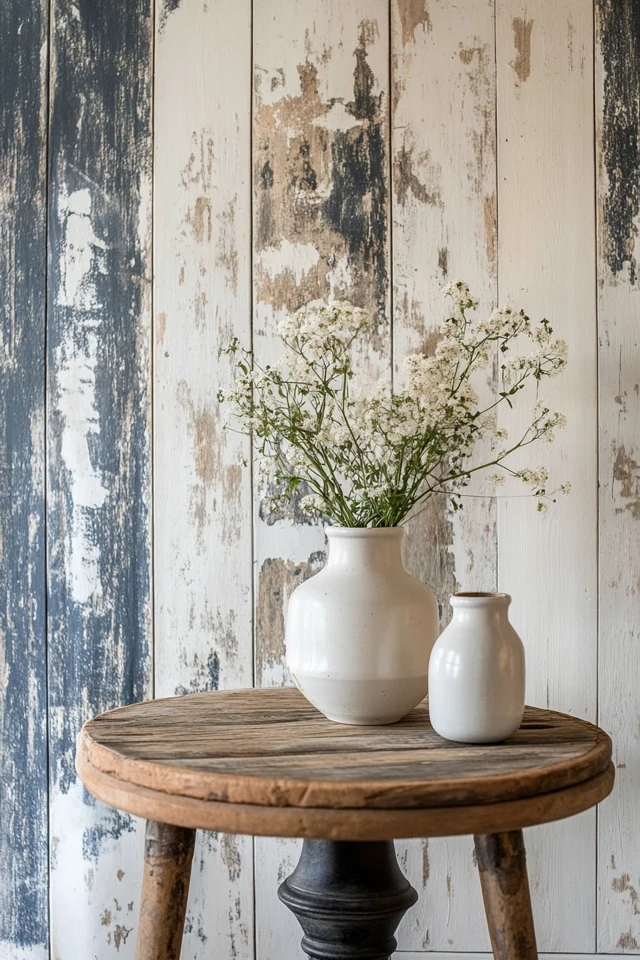
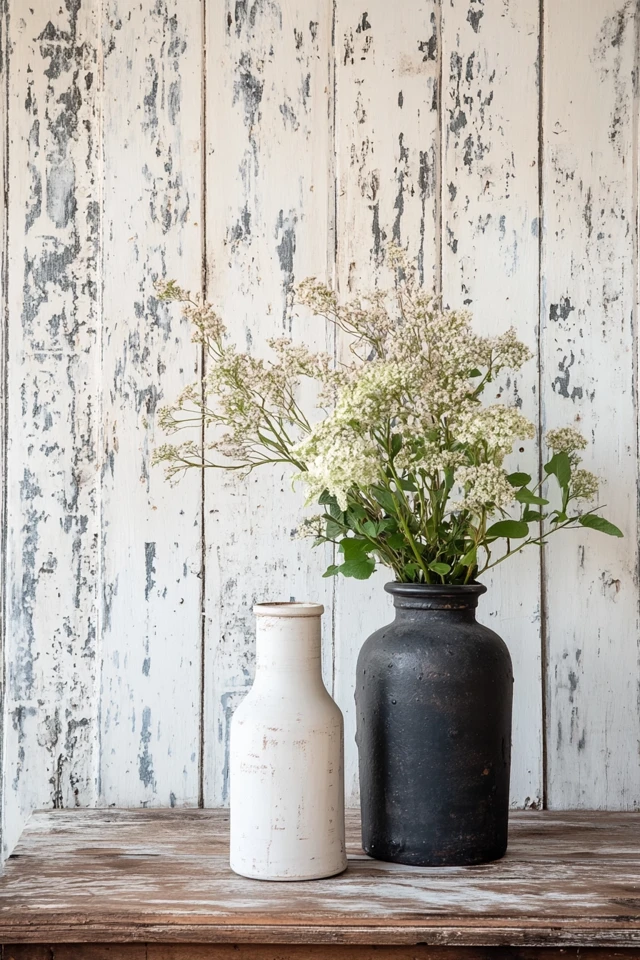
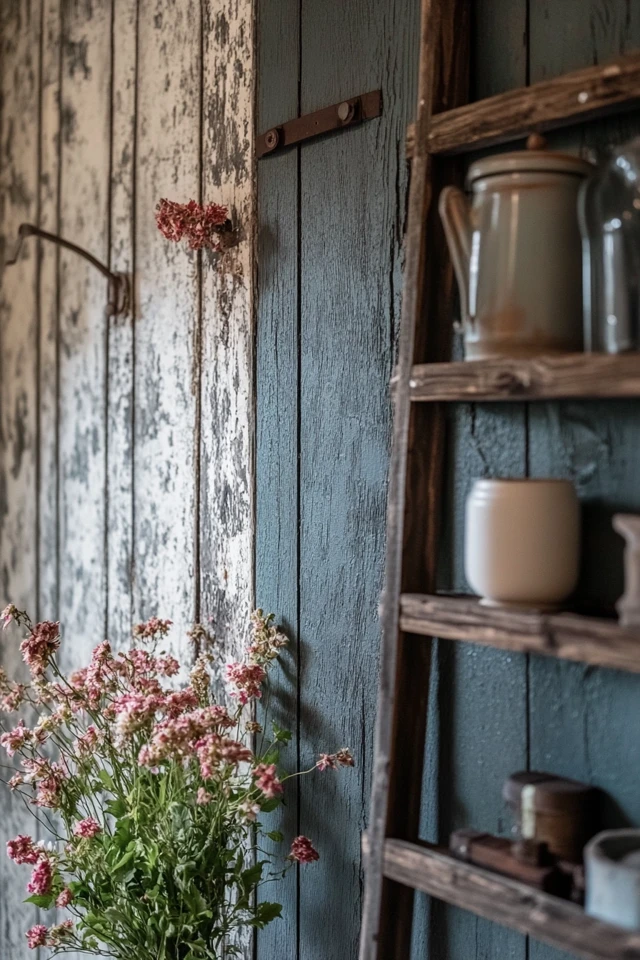
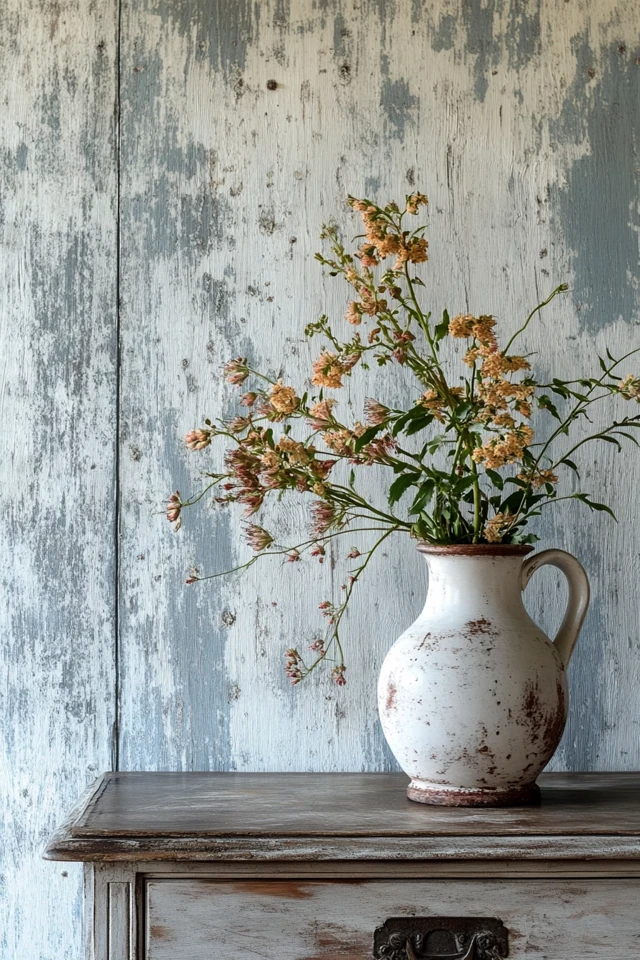
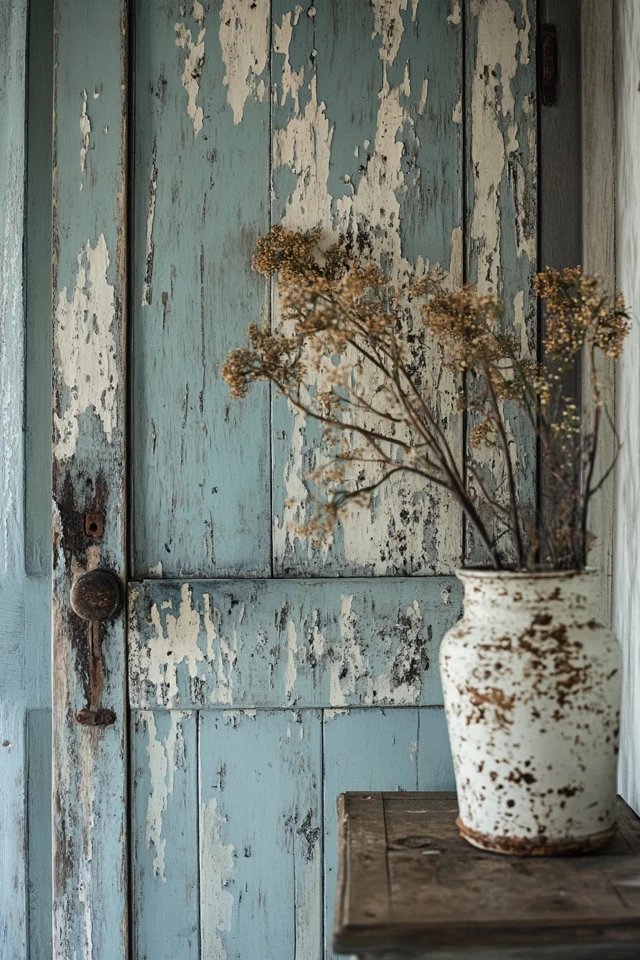
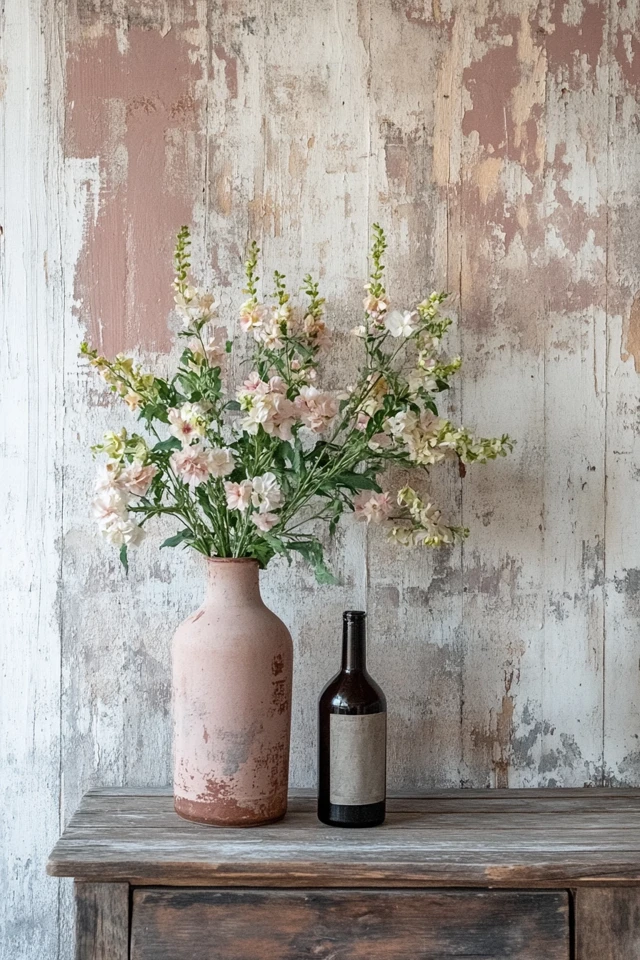
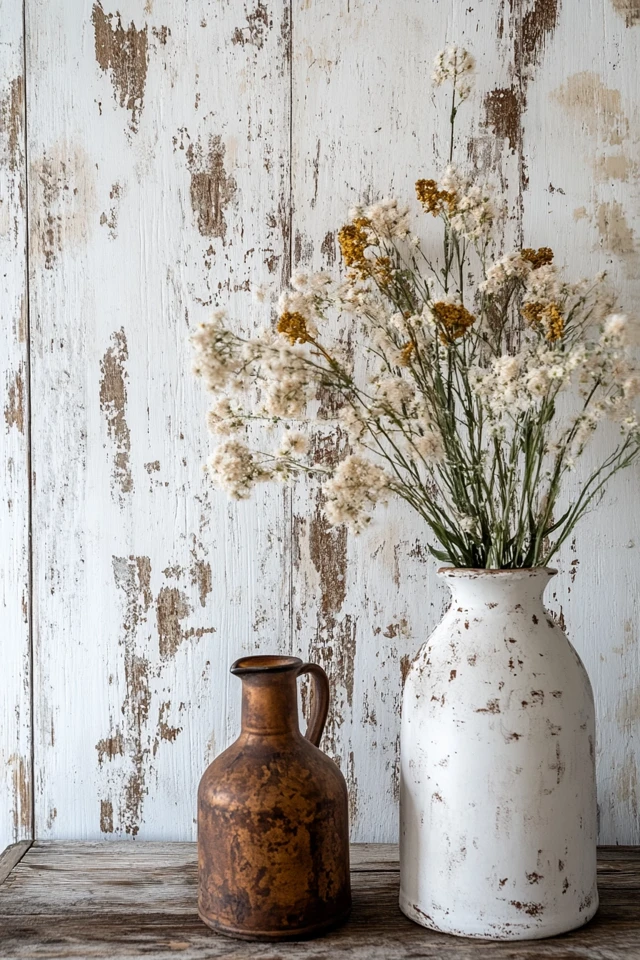
Where to Use Distressed Finishes in Your Home
Living Room
- A distressed coffee table or media console adds rustic charm.
- Use distressed picture frames to create a gallery wall.
Kitchen
- Install weathered wood open shelving.
- Use chipped paint cabinets for a vintage farmhouse kitchen.
Bedroom
- Opt for a distressed headboard or bedside tables.
- Add a whitewashed bench at the foot of the bed.
Bathroom
- Use a distressed vanity or mirror frame.
- Incorporate rusted metal light fixtures for a rustic touch.
Tips for Incorporating Distressed Finishes
- Balance is Key: Too many distressed pieces can overwhelm a space. Mix them with clean, modern elements for contrast.
- Focus on Focal Points: Use distressed finishes on standout pieces like a dining table or mantel.
- Stick to Neutral Colors: Neutral tones enhance the vintage feel of distressed finishes.
- Blend Textures: Pair distressed wood with soft textiles like linen or wool to create a cozy, balanced look.
Conclusion
Distressed finishes are the heart and soul of farmhouse décor. They bring character, history, and warmth to any space, turning everyday furniture into conversation-worthy pieces. Whether you’re layering chipped paint on a cabinet or showcasing a weathered wood table, these finishes are what give farmhouse design its authentic, lived-in charm.
As I reflect on my own experience, I’m reminded of the joy that comes from creating a home that feels both beautiful and personal. Distressed finishes are more than a design trend—they’re a way to tell your home’s story. So grab some sandpaper, experiment with paint, and don’t be afraid to embrace imperfections. After all, farmhouse décor is all about celebrating the beauty of the imperfect and the well-loved.
FAQ
What are distressed finishes?
Distressed finishes mimic the look of aged, worn furniture. They often feature weathered wood, chipped paint, or sanded edges to create a vintage effect.
Can I distress furniture myself?
Yes! Sanding, whitewashing, and layering paint are easy techniques to create distressed finishes at home.
What materials work best for distressed finishes?
Wood is the most common material, but metal and even some plastics can be distressed with the right techniques.
How do I keep my distressed furniture from looking too shabby?
Balance distressed pieces with clean, modern elements, and use the technique sparingly to avoid an overly cluttered look.
Are distressed finishes durable?
Yes, especially when sealed with a clear wax or matte finish. The imperfections of distressed finishes also help hide everyday wear and tear.

